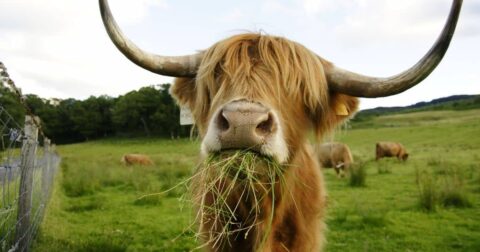Explainer
Agriculture Affects Deforestation Much More Than Most People Realize
Climate•7 min read
Explainer
Methane stays in the atmosphere for around 12 years, which can make it a tricky gas to calculate.


Words by Caroline Christen
Carbon dioxide has long dominated discussions about global warming — and not without reason. Reducing CO2 in the atmosphere is, of course, critical to climate action. But in the past five years, scientists have expanded their recommendations, widening their attention to include another climate pollutant called methane, or CH4. Methane doesn’t last as long in the atmosphere as CO2, but this greenhouse gas is up to 80 times more powerful at trapping heat. Short-lived but potent, methane plays a make-or-break role in fending off catastrophic warming in our immediate future.
Methane is generated in a variety of ways. While natural sources such as wetlands produce the gas, human activities are a significant driver too. Anthropogenic methane sources include landfills, oil and natural gas systems, coal mining, agriculture and wastewater treatment.
Because methane stays in the atmosphere for only around twelve years, unlike CO2, which can persist for thousands of years, climate scientists say that cutting methane emissions is critical for preventing global warming from accelerating. That action then buys us time to lower CO2 sources, these scientists suggest.
Yet the problem, according to the World Meteorological Organization (WMO), is that methane emissions from biological sources, including agriculture, are now rising faster than ever. So where does this methane come from?
Much of it comes from the food system. The agriculture sector produces 40 percent of global methane emissions, with 32 percent coming directly from livestock production. Ruminant animals like cows, in particular, emit methane as they belch while digesting their food. What’s worse: new research shows that livestock’s contribution to global warming may be even higher, as emissions from agricultural ponds — on-farm bodies of water used to hydrate livestock, raise fish or for crops — may have been underestimated.
This continued rise of methane emissions has prompted governments worldwide to search for ways to reduce methane emissions from agriculture. But in these discussions, there’s an important threshold question: What is the best method to calculate methane emissions from animal agriculture?
Because many greenhouse gases contribute to climate change, researchers rely on equations referred to as “Global Warming Potentials” — or GWPs — to compare the impacts of these different gases.
A GWP measures how much heat the atmosphere absorbs from a greenhouse gas relative to the heat that the same amount of carbon dioxide would cause. In other words, a GWP allows scientists to convert emissions into comparable CO2 equivalents. Because all gasses are measured against carbon dioxide then, the GWP of CO2 is 1, regardless of what time frame the scientist is looking at.
The GWP of methane, on the other hand, does depend on the time frame. For example, over the span of 20 years, methane is 81 times or so more powerful at warming the atmosphere than carbon dioxide. Over the span of 100 years though, it is around 29 times more potent. The GWPs used in these calculations are called GWP20 and GWP100, respectively, and they are still both the most common way of measuring greenhouse gases.
In 2018, a group of researchers from the Oxford Martin School developed a new metric called GWP*. According to these scientists, the more commonly used GWPs like GWP100 do not consider that greenhouse gases have different atmospheric lifetimes and radiative impacts. Since methane has a shorter lifespan than CO2, they argue, GWP100 “falls short in many scenarios.”
GWP* is an effort to address those shortcomings by factoring in the short-lived nature of methane and spreading methane emissions out evenly over a 100-year time horizon. According to its developers, GWP* is superior because it can better predict how methane emissions will influence global temperature changes over the next century. Especially promising, they say: if you can keep global methane levels stable, new methane emissions will not contribute to additional temperature rises. The GWP* of stable methane emissions is zero—regardless of how high these emissions are.
Different GWPs provide different ways of measuring emissions, but none of these are without flaws.
GWP100, for example, was developed decades ago when projections assumed that humanity had until 2100 to tackle global warming. Yet climate change progresses at a much faster rate than assumed. According to the WMO, there is now a 50:50 chance of average global temperatures reaching 1.5°C above pre-industrial levels within the next five years.
Some scientists criticize the use of GWP20 for focusing too much on short-lived gases and providing incentives that neglect much-needed reductions in CO2 emissions. Other experts favor GWP20 over GWP100, arguing that the more we are concerned about the pace of climate change, the more we should focus on the impact of methane emissions over the next two decades, not the next 100 years.
Meat and dairy lobby groups have embraced GWP*, prompting environmentalists to criticize them for “trying to change the maths of climate change” and undermining effective climate policies.
Climate scientists point out that using GWP* opens the door for countries with large and stable livestock sectors to shirk their responsibility from historic warming. On the other hand, GWP* punishes countries with small but growing livestock sectors. Ultimately, global methane emissions — which is the bottom line for those who use GWP* and everyone else — are at an all-time high and still going up.
This piece has been updated.